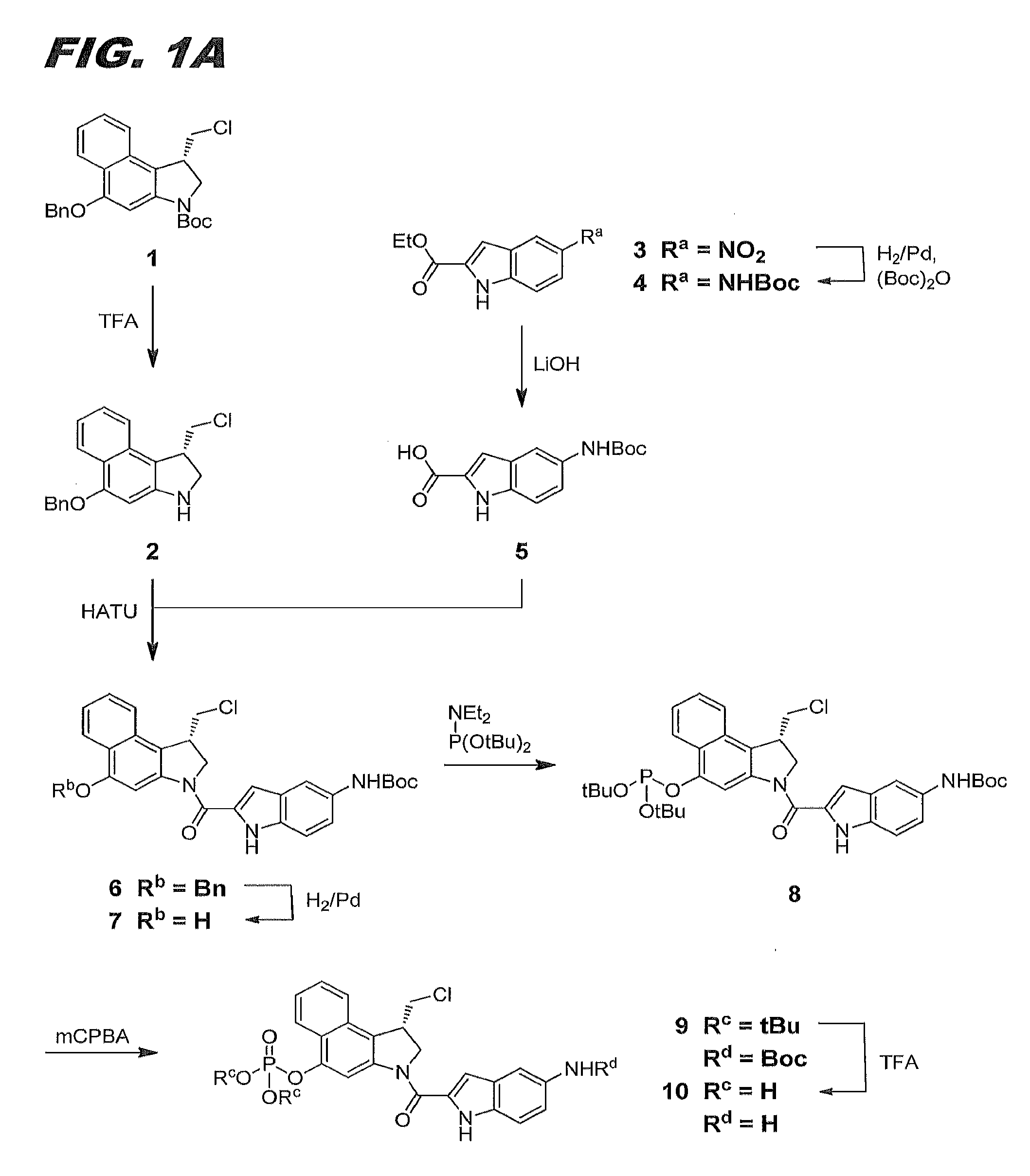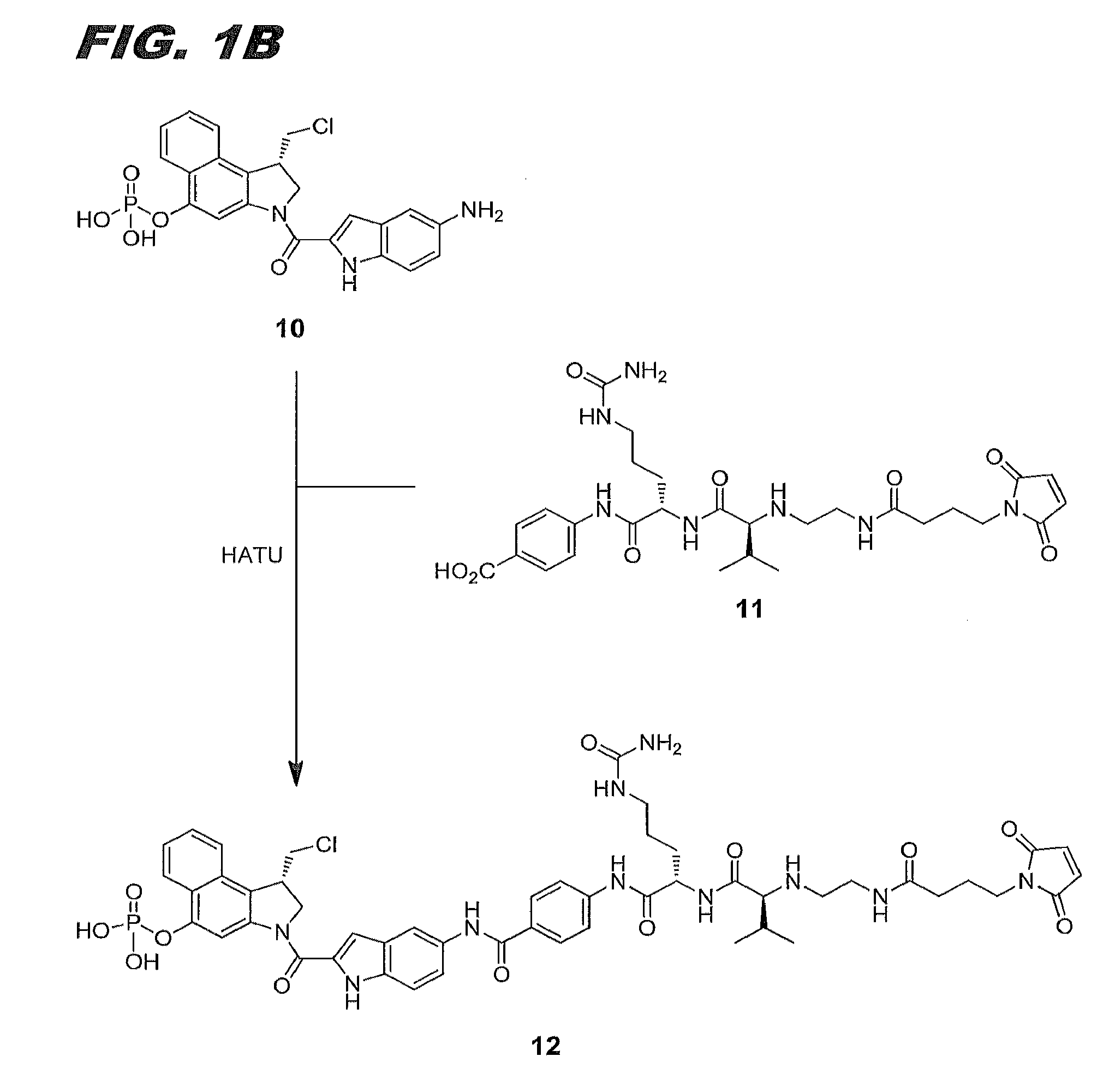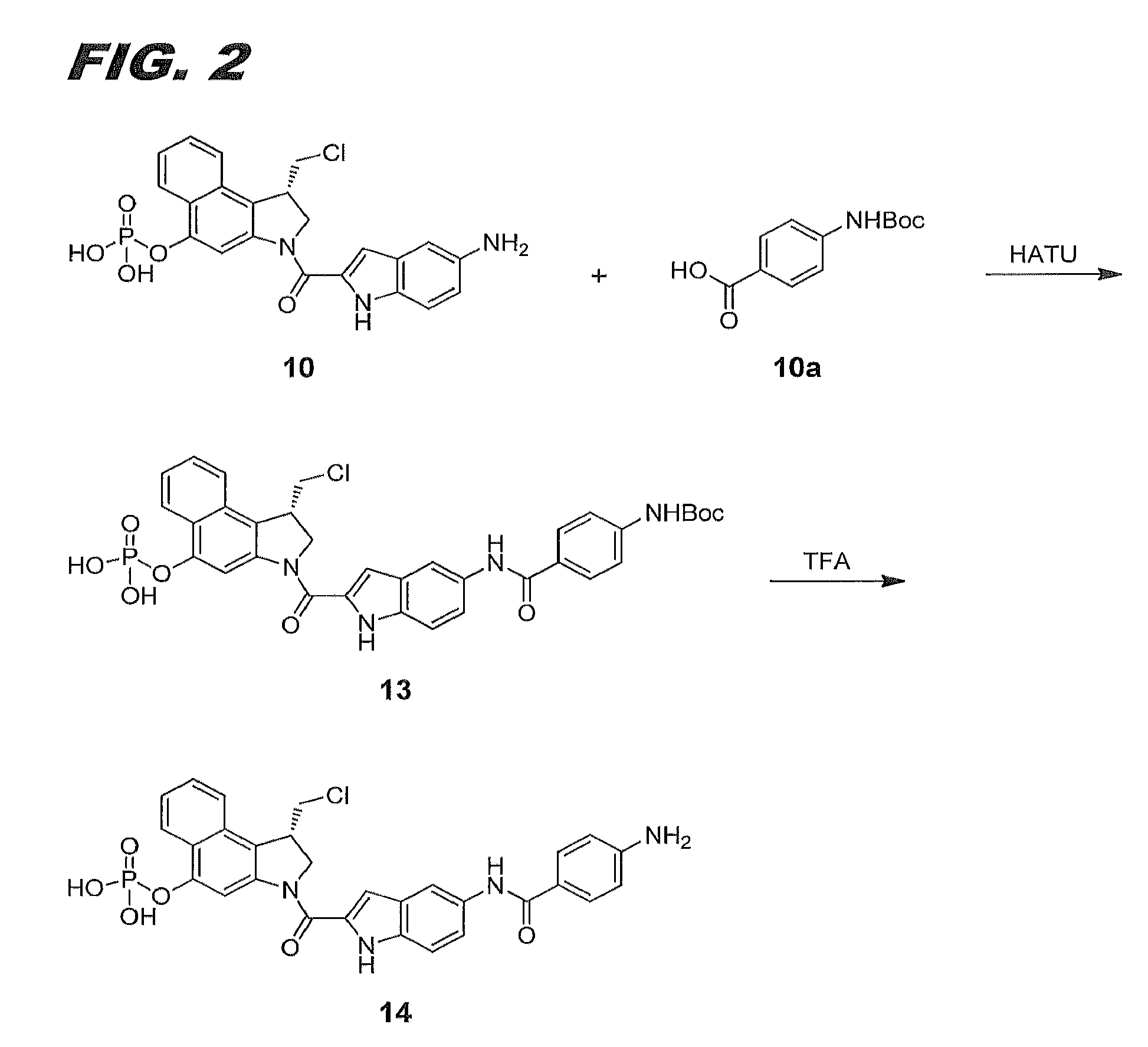Immunoconjugates, compositions for making them, and methods of making and use
a technology applied in the field of immunoconjugates and compositions, can solve problems such as inefficient decarbamoylation
- Summary
- Abstract
- Description
- Claims
- Application Information
AI Technical Summary
Benefits of technology
Problems solved by technology
Method used
Image
Examples
example 1
Compound (IIa)
[0101]This example describes the synthesis of compound 12 of this invention (also referred to herein as compound (IIa)). FIGS. 1A and 1B combine to show the scheme for its synthesis.
[0102]Compound 2. Trifluoroacetic acid (“TFA,” Fisher, 5 mL) was added to a solution of compound 1 (1 g, 2.36 mmol) in anhydrous dichloromethane (“DCM,” Sigma-Aldrich, 5 mL). The reaction mixture was stirred at room temperature (“RT,” circa 25° C.) for 30 min. High pressure liquid chromatography (“HPLC”) analysis showed the reaction was complete. The reaction mixture was concentrated and dried under high vacuum overnight to yield 1.15 g of compound 2 as a greenish solid (TFA salt).
[0103]Compound 4. Di-tert-butyl dicarbonate (“(Boc)2O,” 10.24 g, 46.97 mmol) in anhydrous methanol (Acros, 100 mL) and palladium (Aldrich, 10% on activated carbon, 400 mg) were added to a suspension of ethyl 5-nitroindole-2-carboxylate (compound 3, Acros, 10 g, 42.7 mmol). The reaction mixture was hydrogenated und...
example 2
Compound (Ia)
[0111]This Example relates to the synthesis of compound 14, also referred to herein as compound (Ia). The schematic for the synthesis is shown in FIG. 2.
[0112]Compound 13. DIPEA (Aldrich, 17 μL, 01 mmol) was added to a solution of compound 10a (Sigma-Aldrich, 15.7 mg, 0.051 mmol) and HATU (Oakwood, 19.4 mg, 0.051 mmol) in anhydrous DMF (Acros, 1 mL) The pH of reaction mixture was above 8. The reaction mixture was stirred at RT for 15 min. HPLC analysis showed starting material was completely activated. Compound 10 (30 mg, 0.051 mmol assuming mono-TFA salt) was added to this solution. More DIPEA was added to adjust the pH of the reaction mixture to above 8. The reaction mixture was stirred at RT for 1 hr. HPLC analysis showed the reaction was complete. The crude product was purified by preparative HPLC with 10-100% acetonitrile gradient in water (with 0.1% TFA by volume) as the eluent to yield compound 13 (25 mg, 71%) as an off-white solid.
[0113]Compound 14. TFA (VWR, 1 ...
example 3
Compound (IIb)
[0114]FIGS. 3A-3D show in combination the synthesis of compound 28, also referred to herein as compound (IIb). Those skilled in the art will appreciate that the general strategy employed here corresponds to the b / b′ / b″ pattern described above in Example 1.
[0115]FIG. 3A shows the synthesis of a first intermediate compound 18.
[0116]Compound 17. A solution of tert-butyl (2-oxoethyl)carbamate (compound 16, Aldrich, 5 g, 31.4 mmol) in methanol (anhydrous, Acros, 15 mL) was added to a solution of (S)-methyl 2-amino-3-methylbutanoate (compound 15, BaChem, HCl salt, 5.26 g, 31.4 mmol), NaOAc (Aldrich, 10.3 g, 82.06 mmol) in methanol (anhydrous, Acros, 65 mL). Then NaBH3CN (Aldrich, 3.95 g, 62.8 mmol) was added. The reaction mixture was stirred at 22.5° C. for 16 hr and concentrated to a slurry. The slurry was dissolved in water (100 mL) and the resultant solution was extracted with EtOAc (3×100 mL). The organic phases were combined, washed with brine (1×100 mL), concentrated, ...
PUM
 Login to View More
Login to View More Abstract
Description
Claims
Application Information
 Login to View More
Login to View More - R&D
- Intellectual Property
- Life Sciences
- Materials
- Tech Scout
- Unparalleled Data Quality
- Higher Quality Content
- 60% Fewer Hallucinations
Browse by: Latest US Patents, China's latest patents, Technical Efficacy Thesaurus, Application Domain, Technology Topic, Popular Technical Reports.
© 2025 PatSnap. All rights reserved.Legal|Privacy policy|Modern Slavery Act Transparency Statement|Sitemap|About US| Contact US: help@patsnap.com



